OIL & GAS
INTRODUCTION
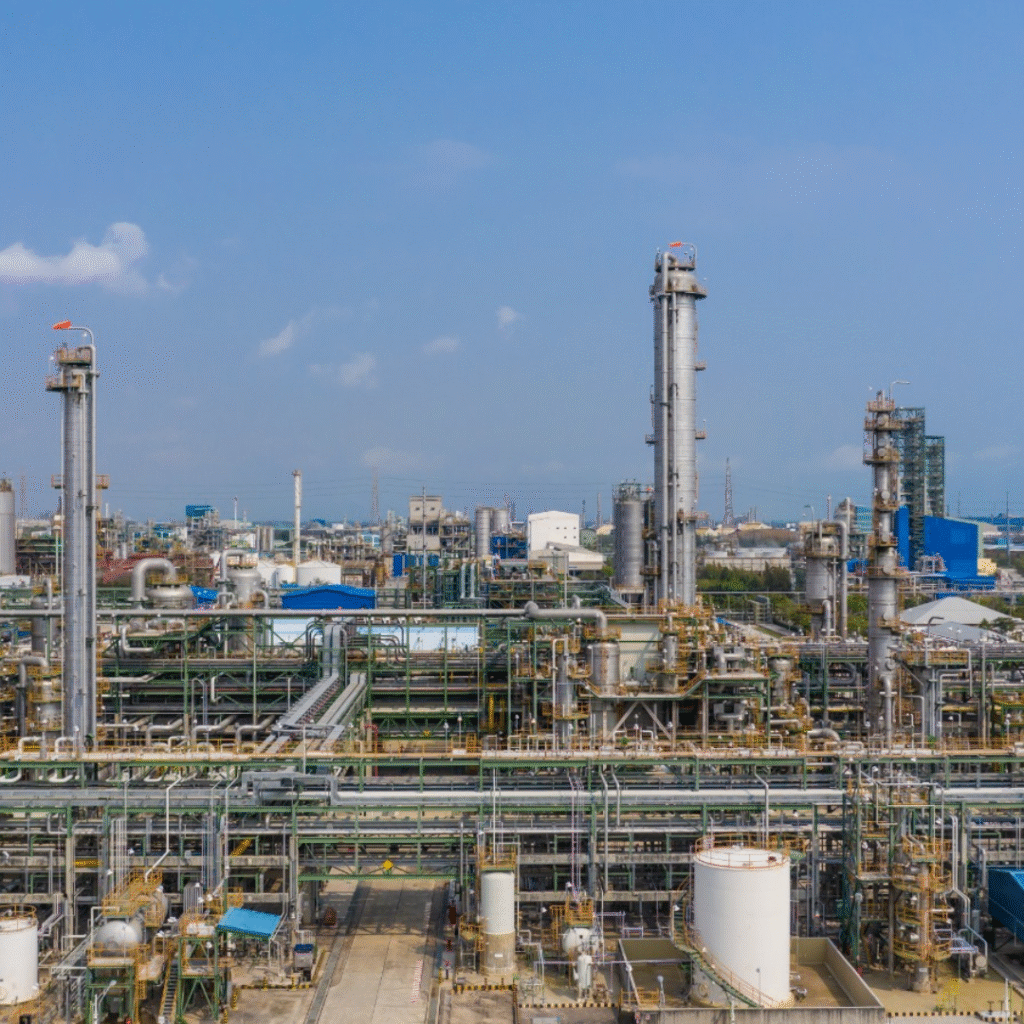
At Epicenter Consulting Engineers Pvt. Ltd., we provide comprehensive, multi-disciplinary engineering consultancy services to the Oil & Gas industry, with a strong emphasis on the downstream segment. Based in Hyderabad, India, we cater to projects of varying scale and complexity, delivering integrated solutions that meet the highest standards of quality, safety, and efficiency. Our experienced team includes project managers, planners, engineers, designers, and skilled 3D modelers, working collaboratively across key disciplines such as Architectural, Civil, Structural, and Mechanical/Piping engineering. We combine technical expertise with practical, execution-focused design to ensure our solutions are not only compliant with industry codes and standards but also optimized for operational reliability and long-term performance. From conceptual planning to detailed engineering, we are committed to providing value-driven services that help our clients achieve their project goals with confidence.

OUR OFFERINGS
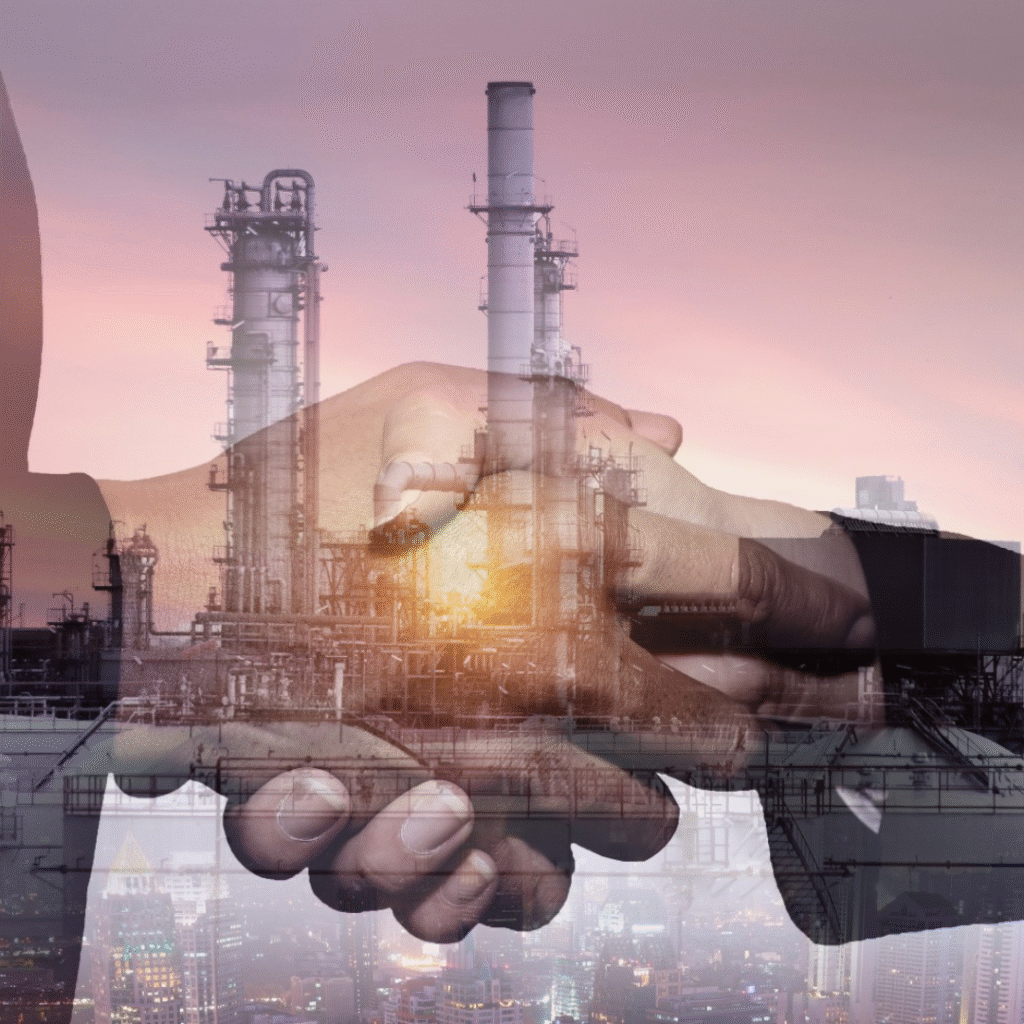
⚙️ Front-End Engineering Design (FEED)
- Development of optimized plot plans and general arrangements
- Preliminary engineering and cost estimation to support investment decisions
🏗️ Detailed Engineering Design
- Complete mechanical, piping, civil, and structural engineering solutions
- Intelligent 3D modeling and clash detection
- Accurate material take-offs (MTOs)
- Constructability reviews for execution efficiency
🔁 Brownfield Modifications
- Engineering solutions for plant revamps, capacity upgrades, and retrofits
- As-built data capture, integration with legacy systems, and tie-in studies for ongoing operations
- Shutdown planning and constructability assessments for minimum disruption
We deliver practical, cost-effective, and execution-ready engineering tailored to the specific needs of EPC contractors and operating companies in the Oil & Gas industry.
SPECIALIZATION
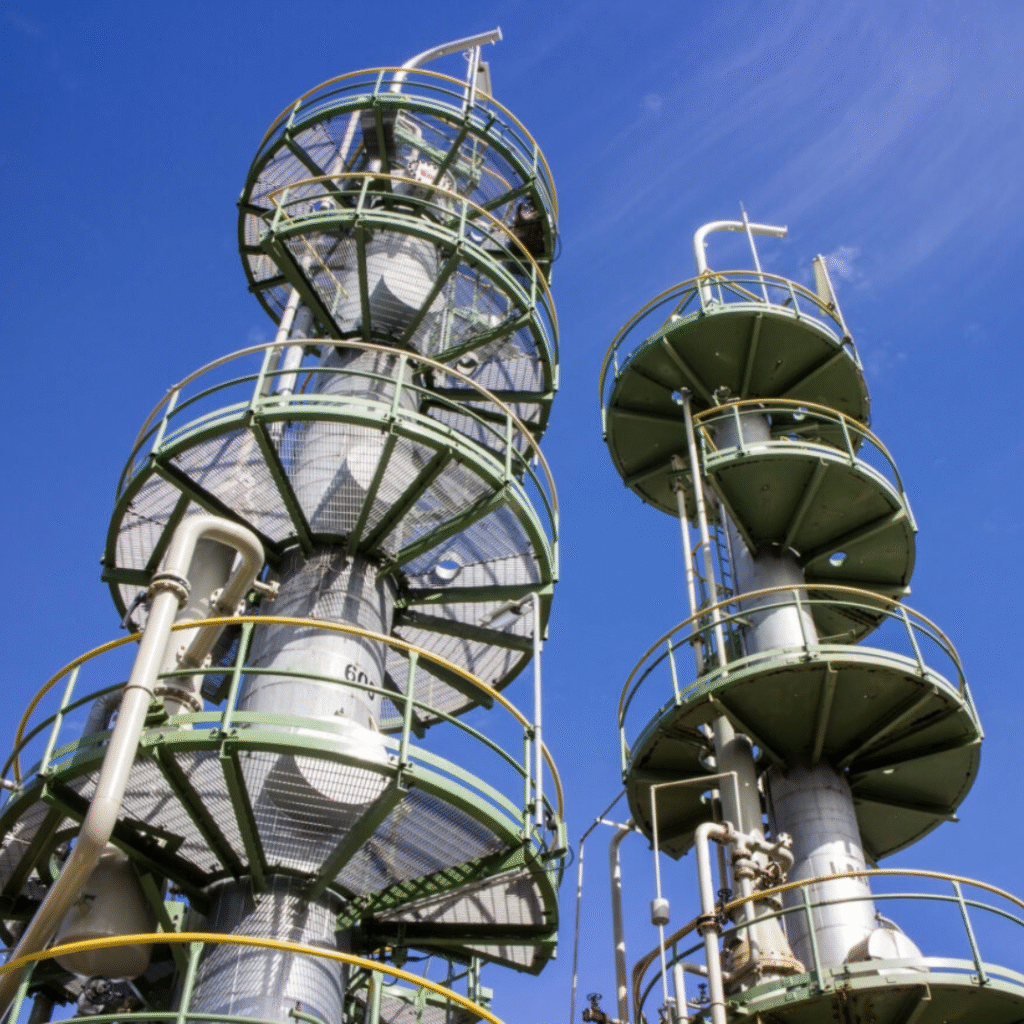
Circular Platform
A circular platform in the oil and gas sector is typically an elevated steel structure, designed to surround or closely align with critical equipment or vessels. The platform deck generally consists of open bar gratings supported over a carefully engineered grid of primary, secondary, and tertiary beams, ensuring both strength and accessibility. Access to the platform is most often via a staircase, although a caged ladder can be provided as an alternative, depending on the frequency, safety requirements, and type of access needed.
We recognize the stringent demands of oil and gas projects, including adherence to local regulations, statutory requirements, and rigorous safety norms. Our designs are developed with a systematic approach to minimize revision cycles, ensuring swift client approvals. By integrating safety into every detail, we help reduce or mitigate operational risks while enhancing reliability and compliance.
We design cross-overs with a deep understanding of the stringent requirements in oil & gas projects, including adherence to local regulations, statutory guidelines, and safety norms. Our systematic approach ensures minimal revision cycles before client approval, while prioritizing operational safety, structural reliability, and long-term performance.

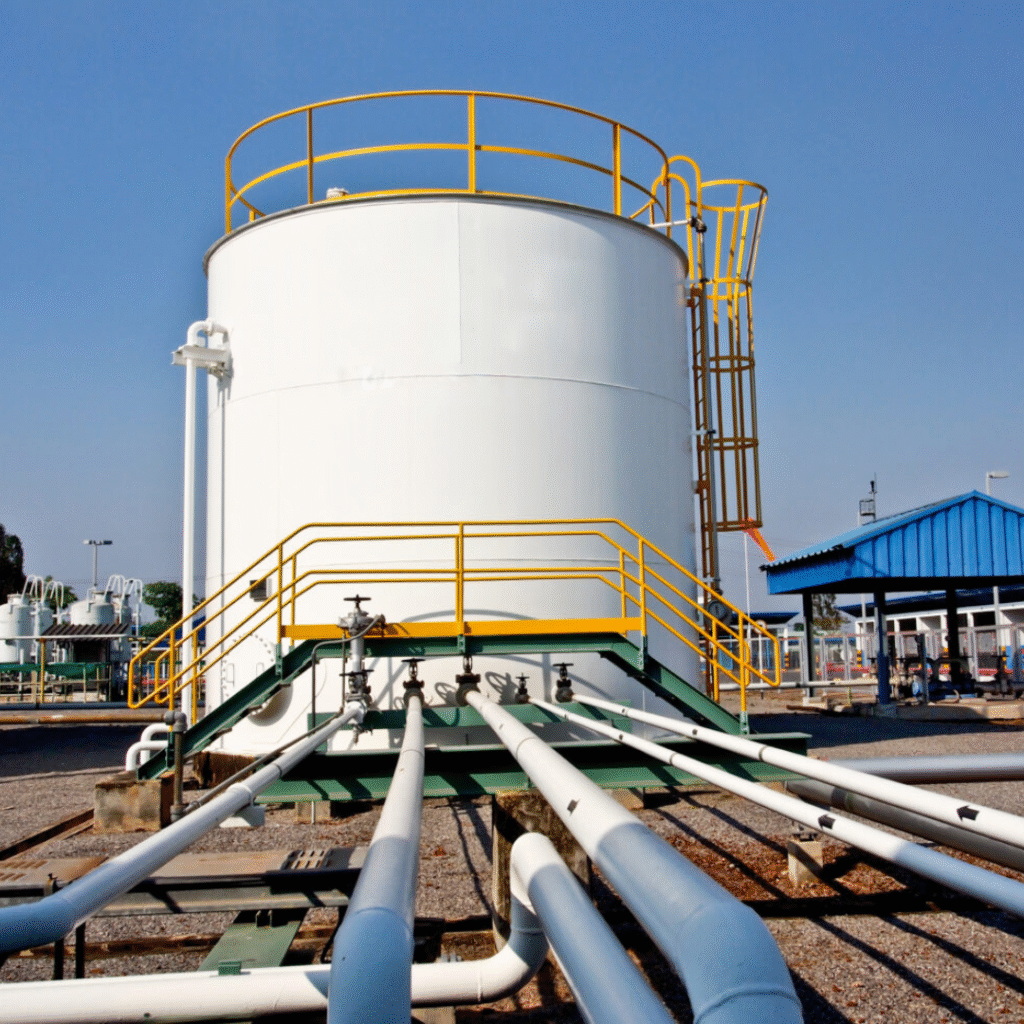
Cross-Over
A cross-over is a common sight in a petrochemical complex. Most refineries, petrochemicals and oil & gas plants have on-grade pipelines running within the plant. And more than often, these pipelines are of diameters in excess of 12″. Crossing these, therefore, can be both difficult and unsafe. A cross-over can range in height from as low as 750mm to as high as a few meters. It can either be designed as a pair of simply supported beams or it may have one or more intermediate supports for economy reasons.
We understand the stringent requirements for an oil & gas project including local regulations, statutory requirements and safety norms, and implement those in a systematic, uncompromising manner. The aim is to minimize the revision cycles until client approval.
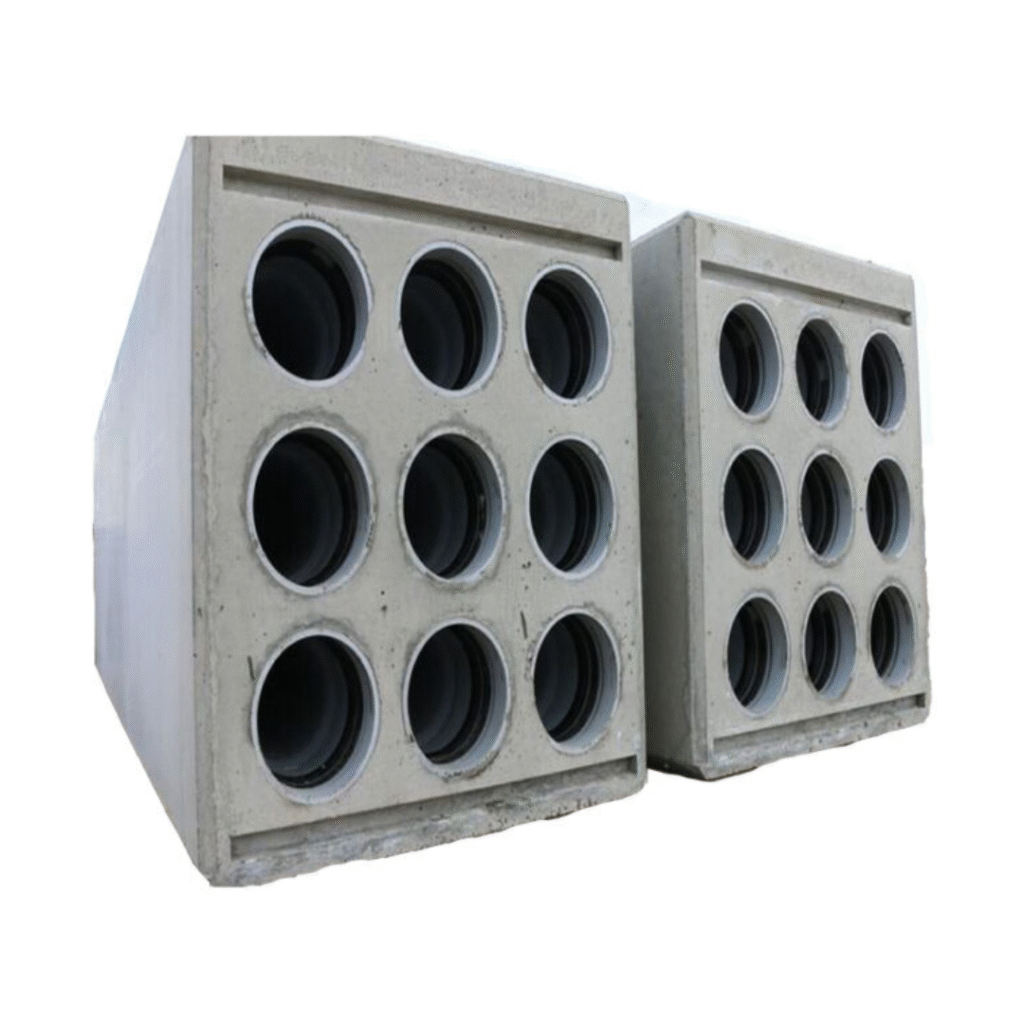
Duct Bank
Electrical and instrumentation duct banks play a vital role in protecting underground cables by absorbing and distributing loads, thereby preventing direct damage to the cables. These systems can be configured in single or multiple rows, with duct spacing determined by factors such as cable type, heat dissipation needs, and installation conditions. For civil engineers, the design can be challenging when ducts are arranged in a non-uniform pattern, as this complicates the reinforcement layout. Ensuring adequate clear cover to all re-bars is critical to maintaining structural integrity and durability.
Our duct bank designs reflect deep industry knowledge and a strong focus on compliance with project-specific requirements. By incorporating safety into every stage of the design, we aim to minimize revision cycles before client approval, while reducing operational risks and ensuring long-term reliability in demanding industrial environments.

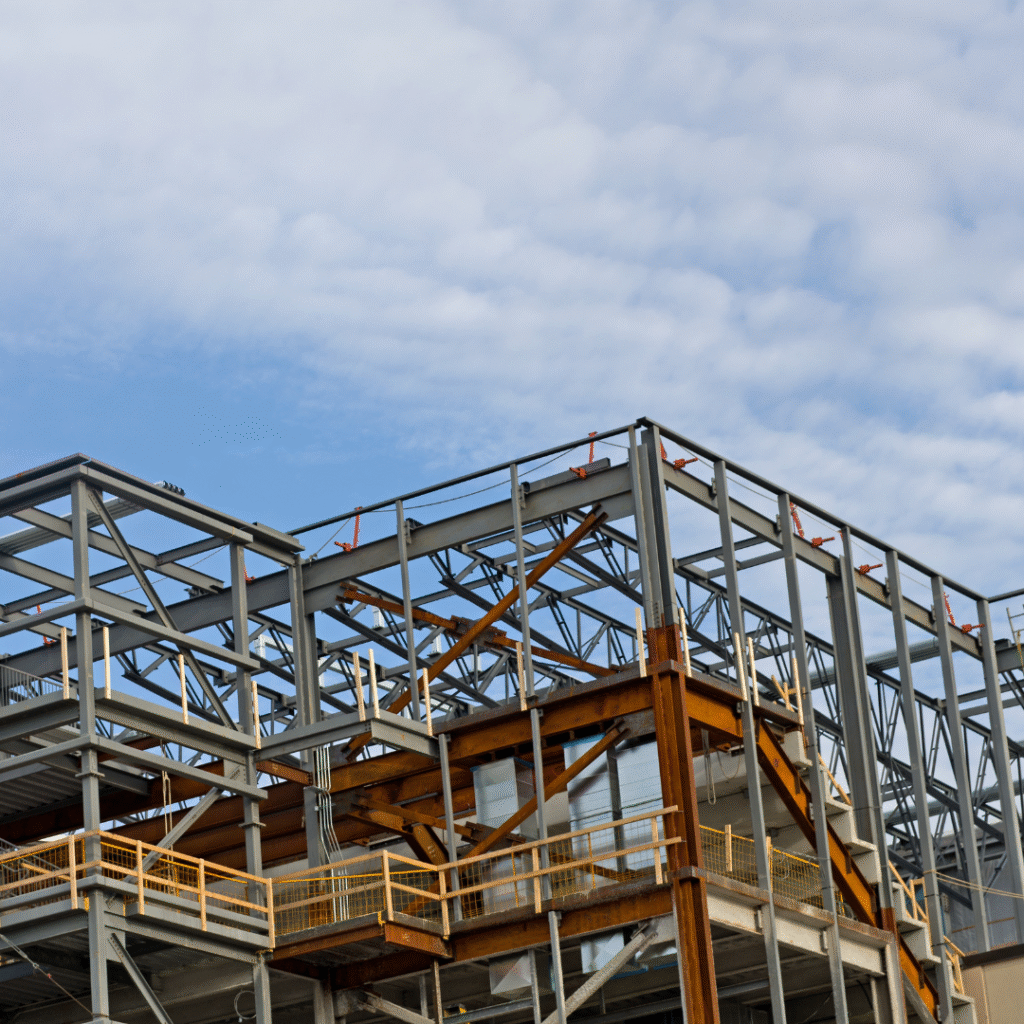
Equipment Support
In industrial facilities, equipment may either be mounted directly at grade or supported on elevated structures such as Grade-Mounted Platforms (GMPs). Our engineering expertise covers the design of robust foundations for a wide range of process vessels and equipment, including exchangers, boilers, reboilers, knockout (KO) drums, and similar installations. Depending on site conditions and load requirements, foundations may consist of isolated footings, combined footings, rafts, or pile-supported systems.
We carefully consider all applicable load combinations—ranging from equipment empty conditions to full operating loads and hydrotest conditions—to determine the appropriate sizing of members and reinforcement for pedestals, footings, rafts, pile caps, and piles. Our systematic and code-compliant approach ensures structural integrity, durability, and operational safety, delivering foundations that perform reliably under the demanding conditions of oil and gas and heavy industrial environments.
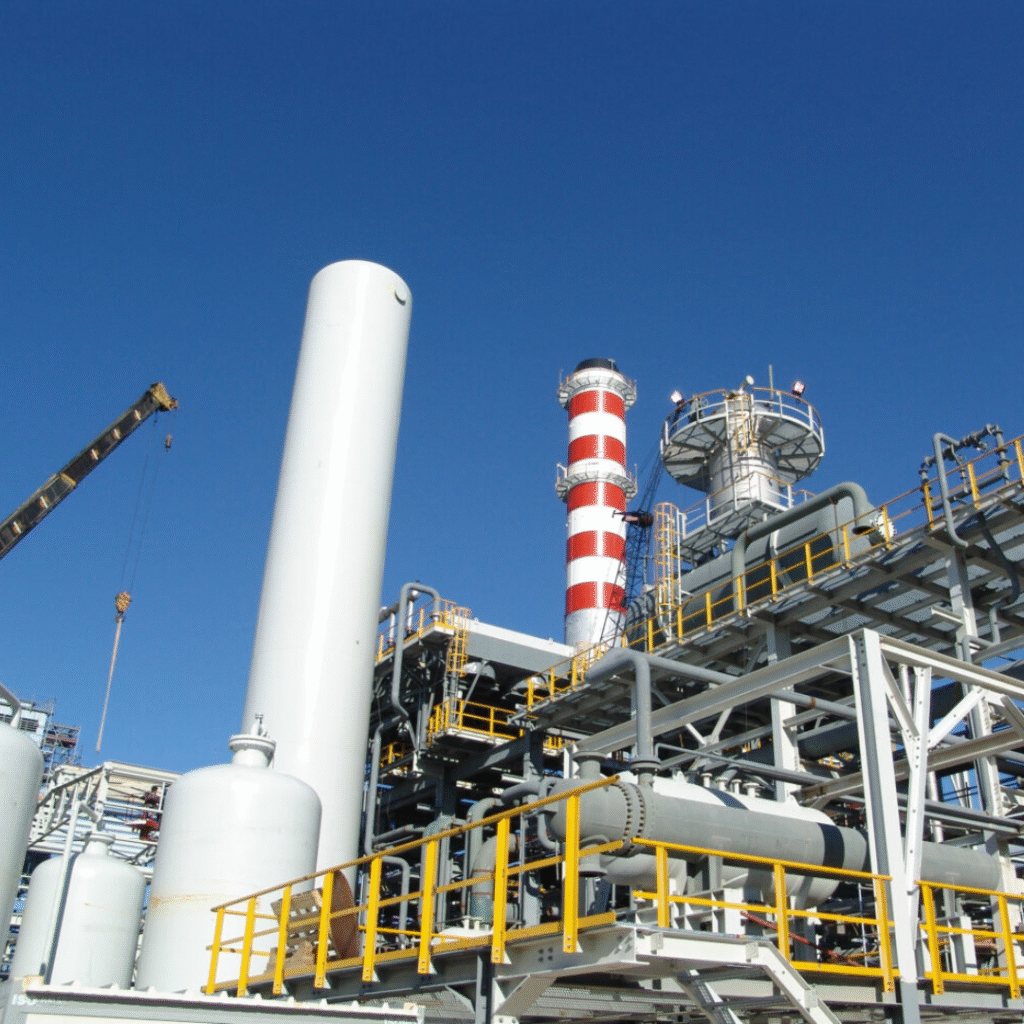
Operating Platform
An operating platform, also referred to as a grade-mounted platform (GMP), is typically an elevated steel structure located around or adjacent to process equipment or vessels, enabling safe access for operation and maintenance. The deck generally consists of open bar gratings supported over a grid of primary, secondary, and tertiary beams. Access is most commonly via a staircase, though a caged ladder may be provided when determined suitable by the piping engineer based on frequency and type of access required.
The primary beams carry all gravity loads to the supporting columns, which are generally oriented in a consistent direction. Lateral loads are resisted using moment-resisting (MR) frames in one direction and braced frames in the other. Designs account for multiple load combinations, including operating, blast, thermal, hydro-test, and friction loads. For soils with moderate to high SBCs, foundations typically consist of pedestals over isolated footings, ensuring stability and durability in demanding operating conditions.

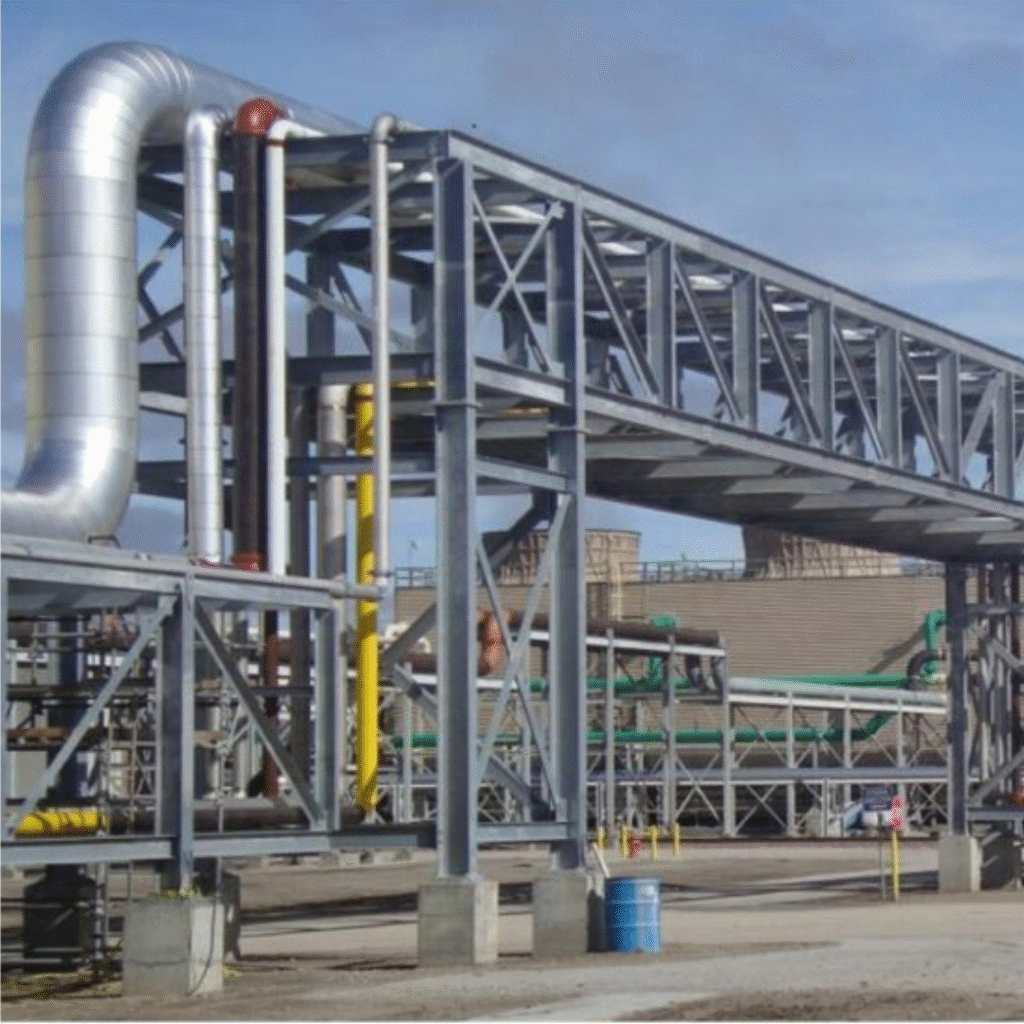
Pipe Bridge
At Epicenter Consulting Engineers, our specialists bring extensive experience in designing steel structures that support process piping, including pipe bridges used to route pipelines across plant roads and access ways. These structures are critical in ensuring uninterrupted process flow while maintaining safe clearance for vehicular movement. Typically, pipe bridges are designed to provide a minimum clear height of 5.5 meters, allowing the tallest vehicles to pass safely beneath.
One of the key design challenges lies in accommodating the required pipe elevations, which may vary across the span. Stability in the orthogonal direction can also be a concern, particularly for long-span bridges or when pipes impose significant transverse friction loads. To address this, plan bracing systems are incorporated to transfer lateral forces effectively to the supporting end frames, ensuring structural integrity, operational safety, and long-term reliability in demanding industrial environments.
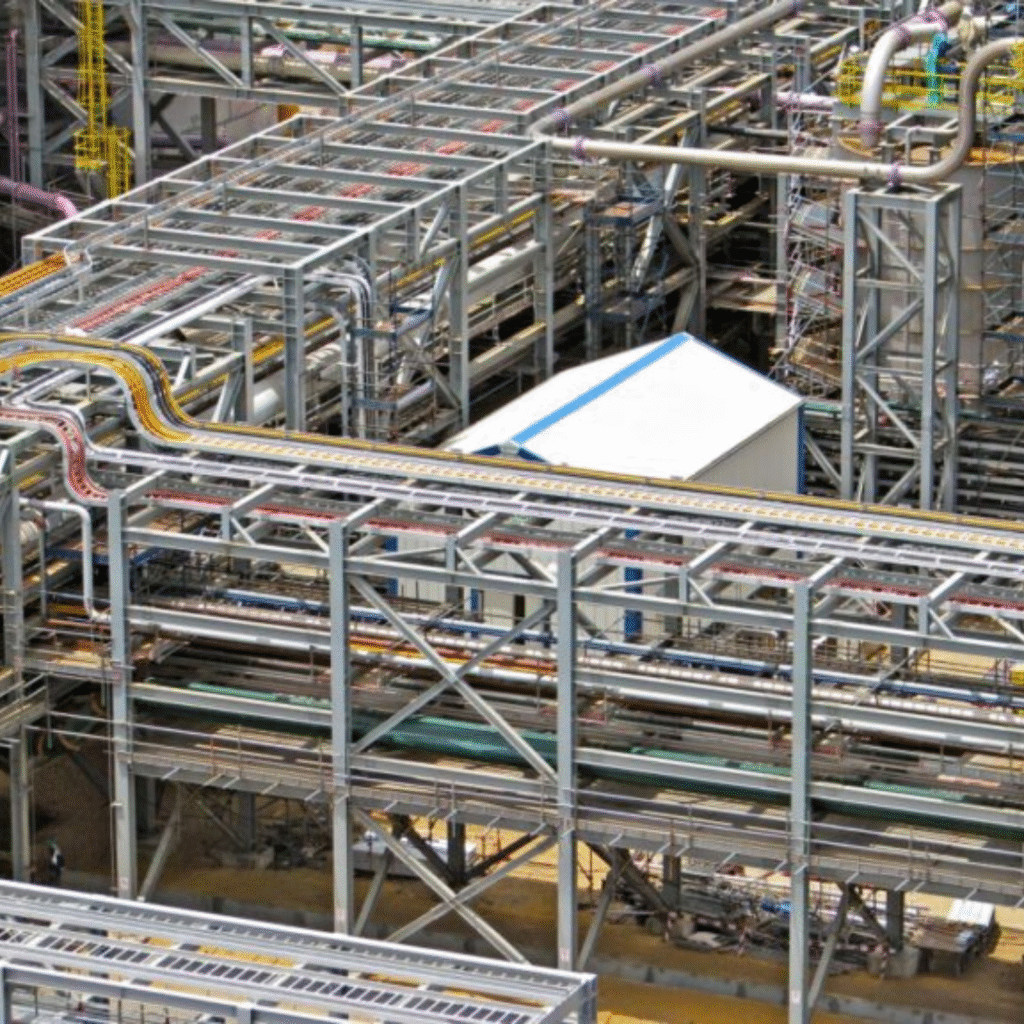
Pipe Rack
Our engineering team has extensive experience in designing pipe-racks of diverse configurations, ranging from simple single-tier layouts to complex multi-tier structures supporting air coolers and other process equipment. These pipe-racks form a critical backbone in process plants, providing organized and secure routing for multiple process pipelines. The maximum length of a pipe-rack (P/R) module is typically determined by temperature fluctuation considerations and generally ranges between 30 and 45 meters. Modules that must accommodate horizontal pipe loops require a different geometry than standard configurations.
To ensure structural stability, plan bracing is incorporated to achieve diaphragm action and transmit lateral forces from supported pipes and equipment to the columns. Frames are usually designed as hinged portals with ‘X’ bracing provided as elevation bracing for each longitudinal frame. Bracing selection also accounts for operator access and safe road crossings beneath the P/R, balancing functionality with safety and operational efficiency.

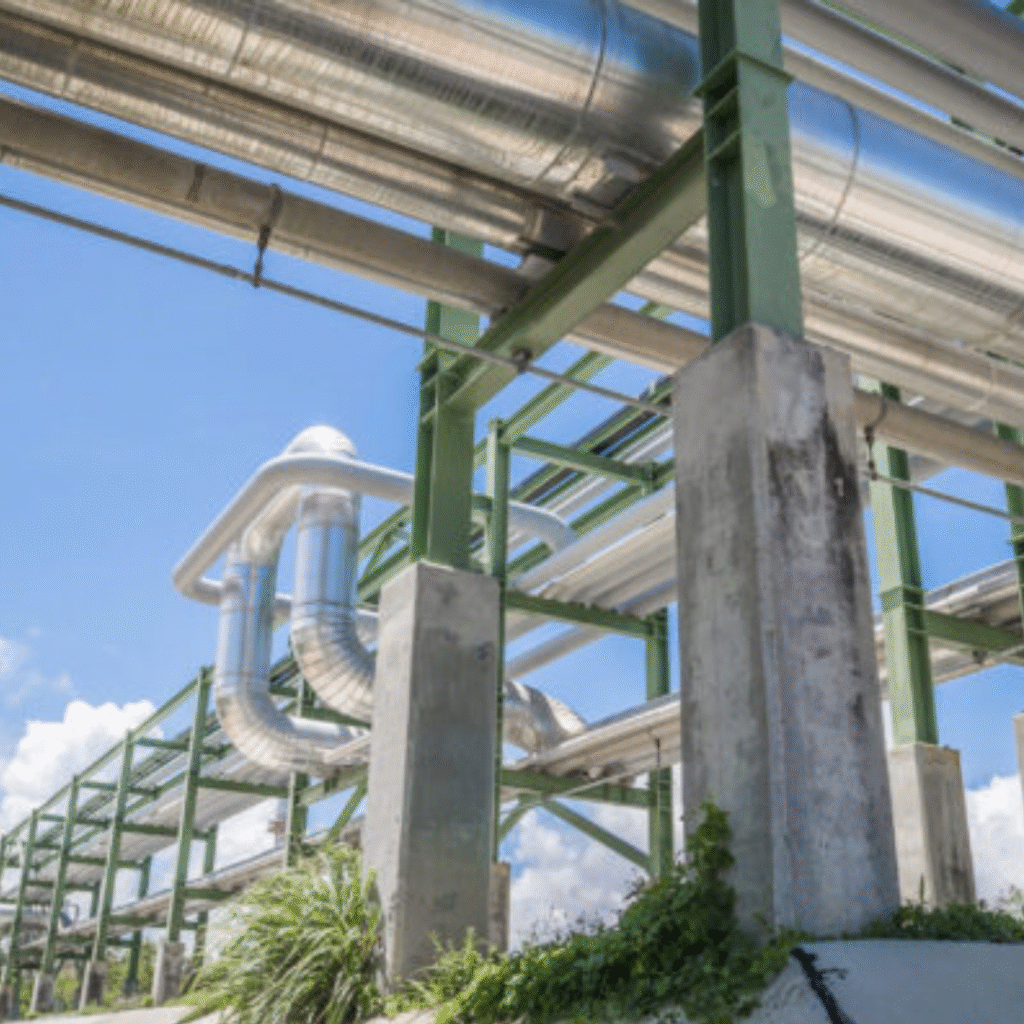
Pipe Support
A pipe support is a simplified yet essential structural framework used to hold one or more pipes at a specified elevation above ground level. In the oil and gas industry, a variety of configurations are employed based on functional and site-specific requirements, including “T” type, inverted “L,” “goal post,” “hanger,” and “bracket” supports. For pipelines at lower elevations, direct pedestal supports are commonly used. However, friction between the pipe and the steel beam can generate both lateral and longitudinal forces on the supporting pedestals, requiring careful structural consideration.
Pedestals and their foundations are therefore designed to resist bending moments in both orthogonal directions. When using portal frames, columns are typically oriented to maximize the section modulus for bending perpendicular to the frame plane, ensuring strength, stability, and long-term reliability under varying operational and environmental conditions.

Pump Shelter
Pump shelters are typically designed as unclad or partially clad pre-engineered buildings (PEBs) that utilize tapered profiles for both columns and beams to achieve an optimal balance of strength and weight. As these structures are relatively lightweight, their design is often governed primarily by wind load combinations rather than heavy gravity loads. Proper wind-resistant detailing is therefore critical to ensure stability, durability, and safety in open or exposed environments.
Leveraging our extensive experience in PEB design, combined with our in-depth understanding of oil and gas operational requirements, we are uniquely positioned to deliver high-performance solutions for pump shelters and compressor sheds. Our designs are tailored to meet project-specific needs, incorporating industry best practices and safety standards, while ensuring cost efficiency, ease of assembly, and long-term reliability under the demanding conditions typical of industrial and process plant environments.

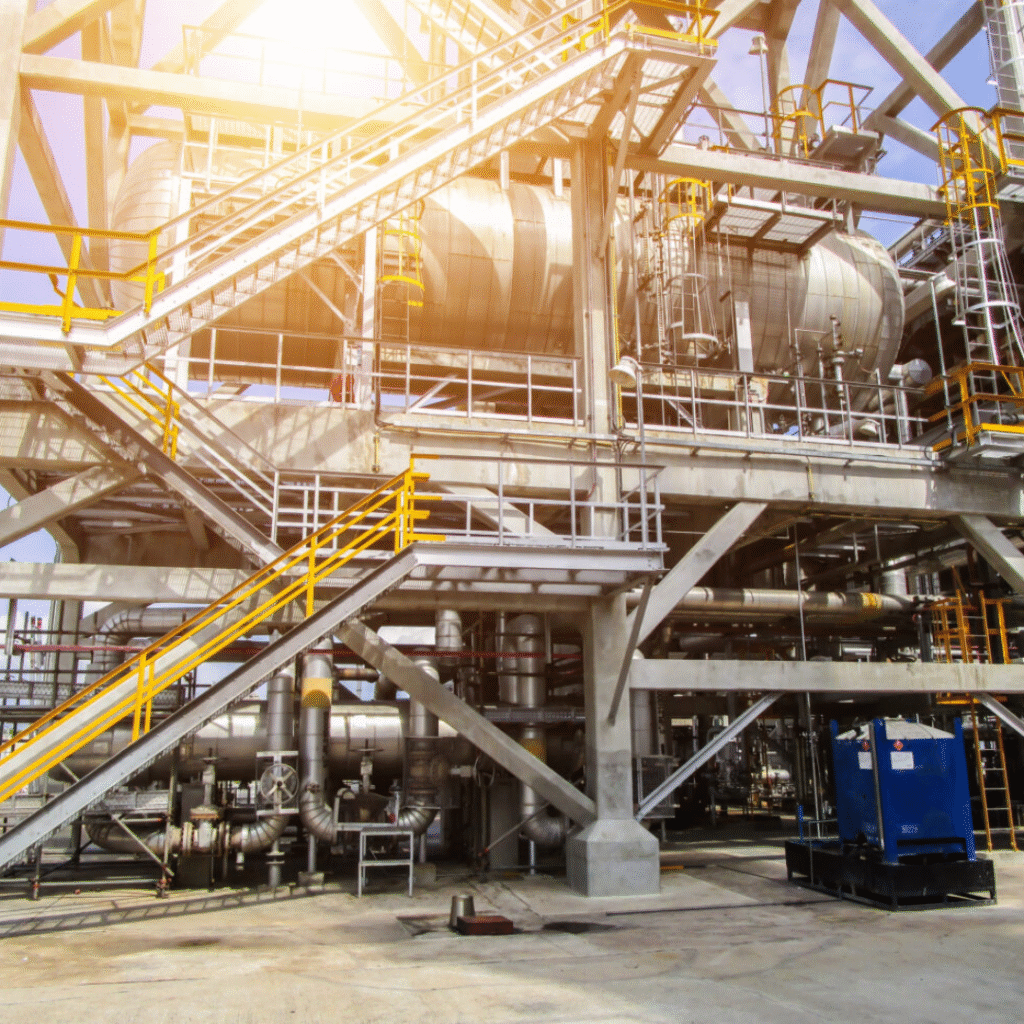
Technological Structure
A technological structure is a multi-tier steel framework designed to support a variety of process equipment and piping systems in industrial plants. Typically, it employs moment-resisting frames (OMRF or SMRF) in one direction and braced frames in the other to provide both flexibility and strength. These structures may support boilers, condensers, exchangers, vessels, and other critical equipment across multiple levels, and in some cases, also accommodate grade-mounted equipment. Flooring is generally composed of open bar gratings, while stairs, ladders, and handrails are integrated for safe and efficient access.
To ensure structural stability, plan bracing is provided at each level to achieve diaphragm action and transfer lateral forces from equipment and piping to the columns. External lateral forces, such as those generated by wind or seismic events, are resisted through frame action or elevation bracing, ensuring safety, durability, and long-term performance.
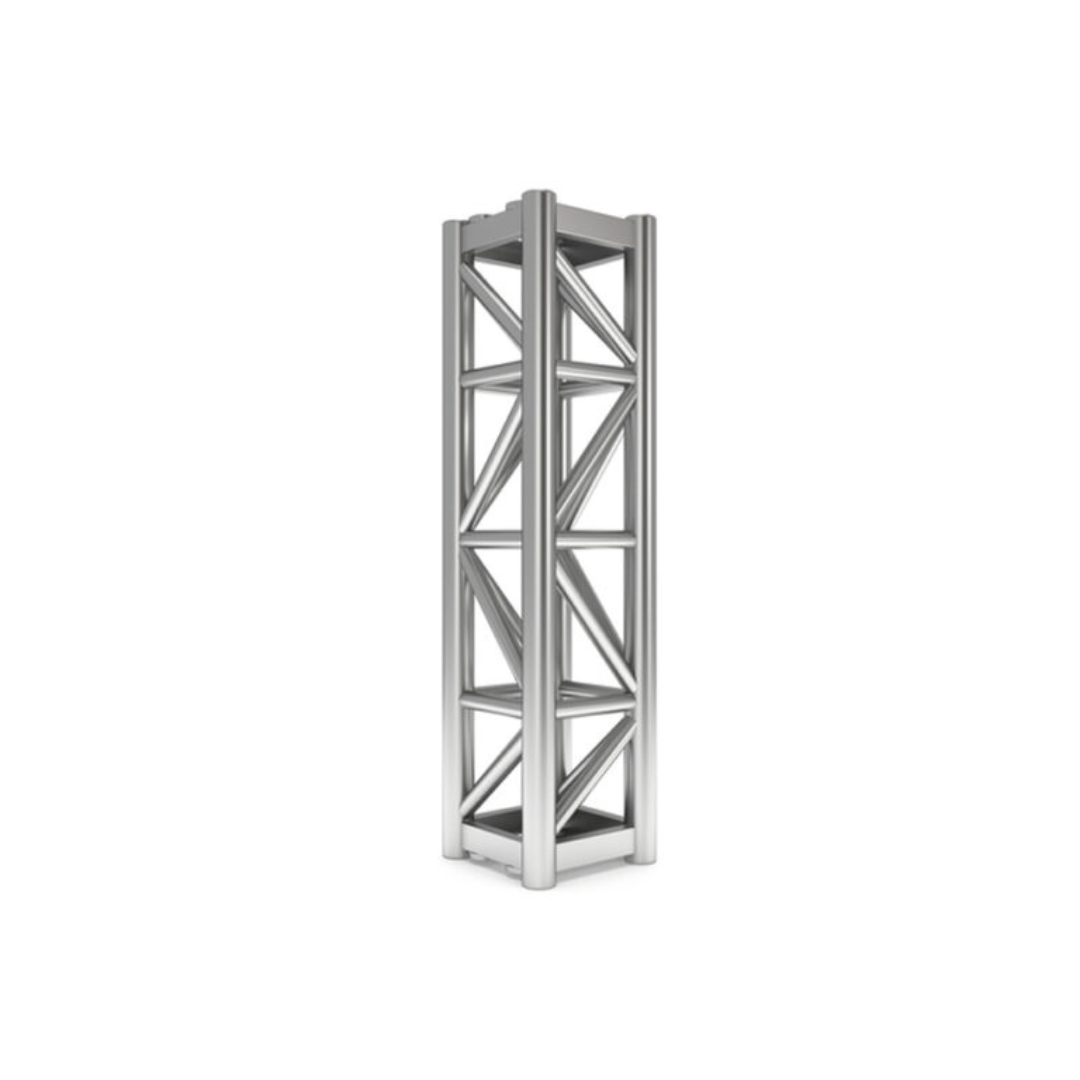
Trestle
When a single process pipe needs to be routed at a relatively high elevation, a trestle support often provides the most efficient solution. For taller installations where the pipe is supported at a specific elevation, a trestle is generally more economical than constructing a full pipe-rack. This makes it an ideal choice for isolated pipe runs or situations where space and cost efficiency are key considerations.
A pipe trestle typically consists of a lattice cantilever column designed with sufficient radii of gyration about both orthogonal axes to ensure stability and strength. Its design is largely governed by transverse loads, which may arise from wind, seismic activity, pipe friction, and/or anchor forces. By optimizing the structural configuration and material use, our trestle designs provide reliable, long-term support while meeting stringent safety and performance requirements in demanding industrial environments.

